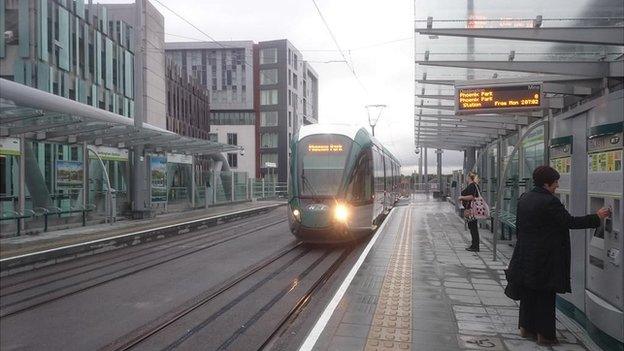What next for trams a decade after last expansion?
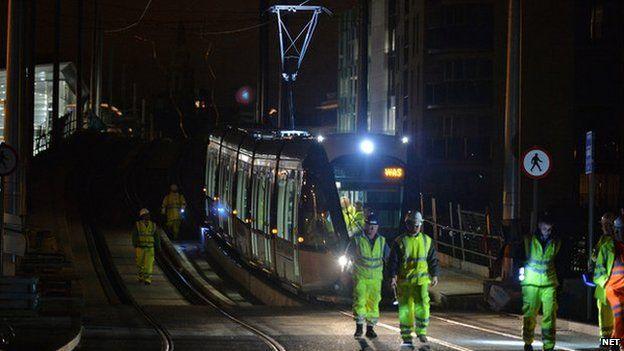
Officials said in August 2014 that the crossing of the bridge over the main railway line marked a milestone in the tram extension project
- Published
It has been exactly 10 years since phase two of Nottingham's tram system opened but with fresh calls for further expansion and a feasibility study being carried out, what is next for the network?
The first Nottingham Express Transit (NET) line started operating in 2004, linking Hucknall and Phoenix Park to the city centre, before lines to Toton and Clifton were added in 2015.
During construction, local businesses complained of disruption and delays, but a decade on NET says phase two has been a success, with more than 15 million journeys now taking place across the network each year.
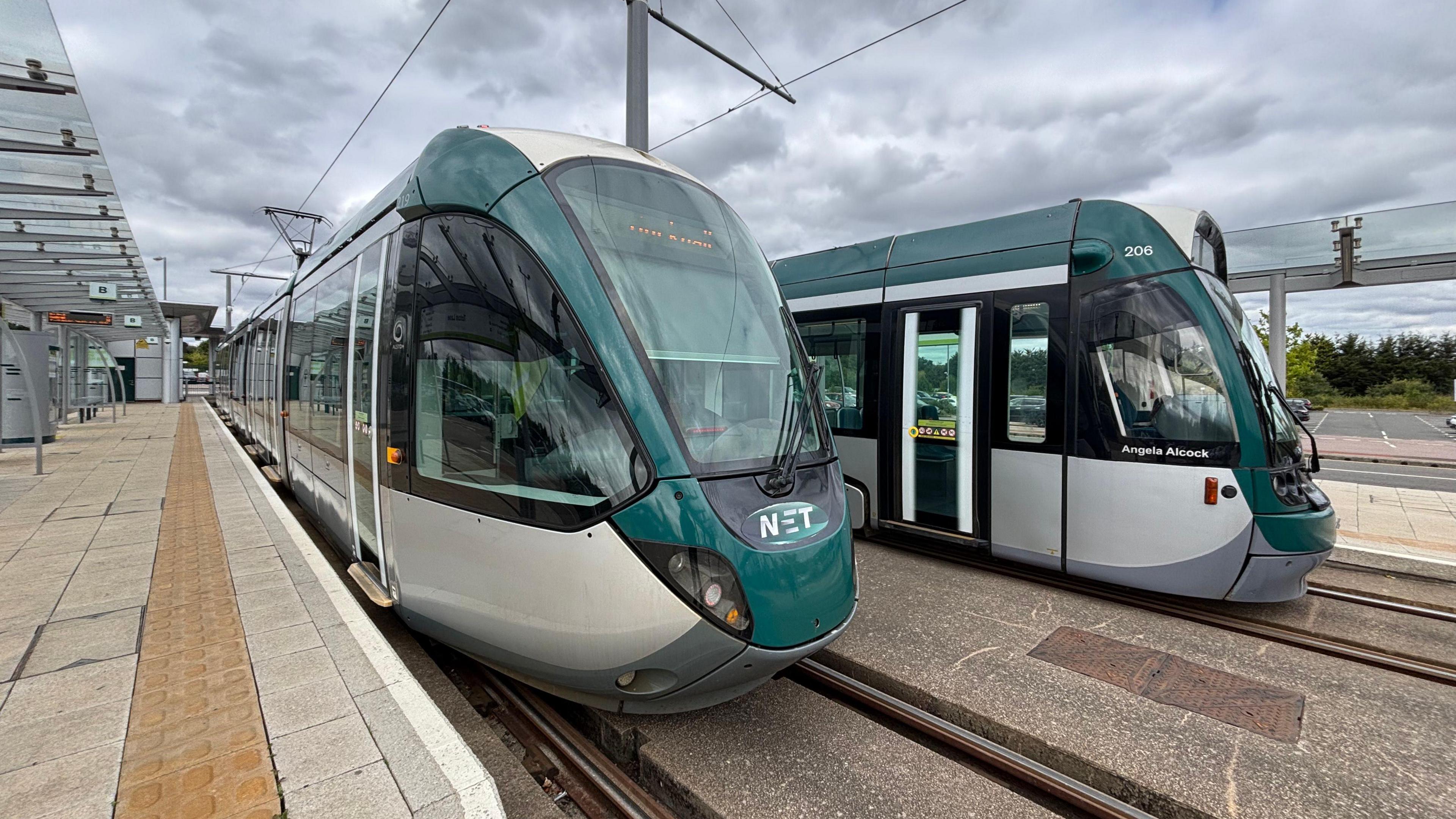
It's been ten years since the network was last expanded
According to Nottingham City Transport, the Nottingham and District Tramways Company's first routes were opened in 1878, operating with horse buses, and the council took over operations in 1897.
In 1901, the first electric tram ran between Sherwood and the Market Place, and the network grew until 1936, when trams were replaced by motor buses.
Plans for a modern system developed in the 1990s and trams returned to Nottingham in March 2004 when the new network was opened to the public.
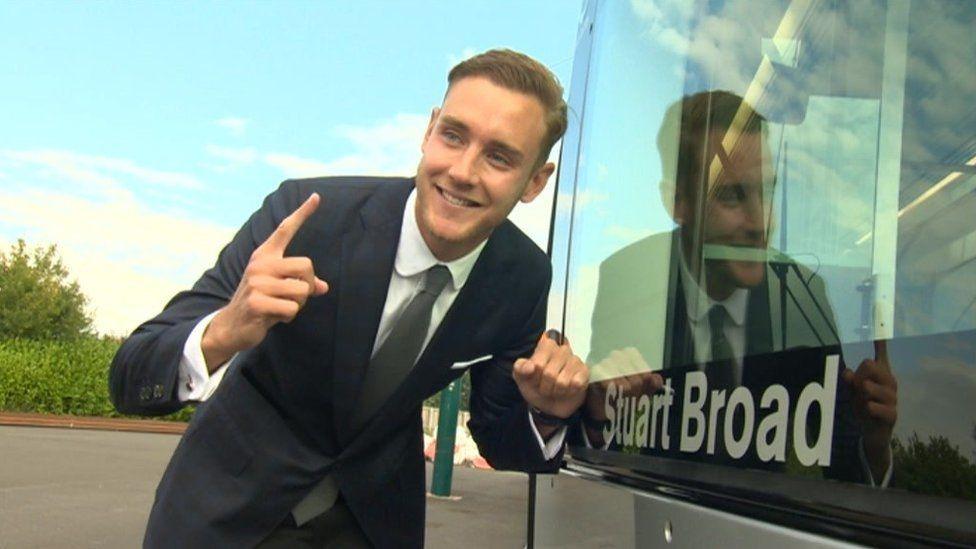
Stars with links to Nottingham, such as cricketer Stuart Broad, have had trams named after them over the years
Work began on the £570m extension project in early 2012, and upon completion, 10.8 miles (17.5km) of new track and 28 new tram stops were added.
A 341 ft (104m) long bridge was inched into position in May 2013 over the main line at Nottingham Train Station, which officials said was a major milestone.
In September 2013, a steel, bowstring arch bridge weighing 1,000 tonnes was jacked up 20ft (6m) and installed near Queen's Medical Centre (QMC).
By the time the new lines eventually opened in August 2015, discussions were already taking place over possible further extensions.
A time lapse film of the Nottingham QMC tram bridge being installed
In the decade since, the network has faced major challenges.
In 2018, auditors warned the tram service could be unable to repay debts, as a report revealed the company was losing almost £1m a week.
Passenger numbers dropped substantially during the covid pandemic, and NET needed support from central government in 2020.
Further losses were posted in the years that followed, at one point reaching £57m in a single year, although much of the company's costs relate to repayments on the long-term loans that funded construction.
The latest accounts showed signs of improvement, and speaking to the BBC last week, Tramlink CEO Tim Hesketh said the company's finances were "in very good shape."
"A couple of years ago things were looking unstable and we were struggling to meet our loan repayments," he said.
"We've now agreed a restructuring of those loans with our lenders and we are on track to deliver that very comfortably."
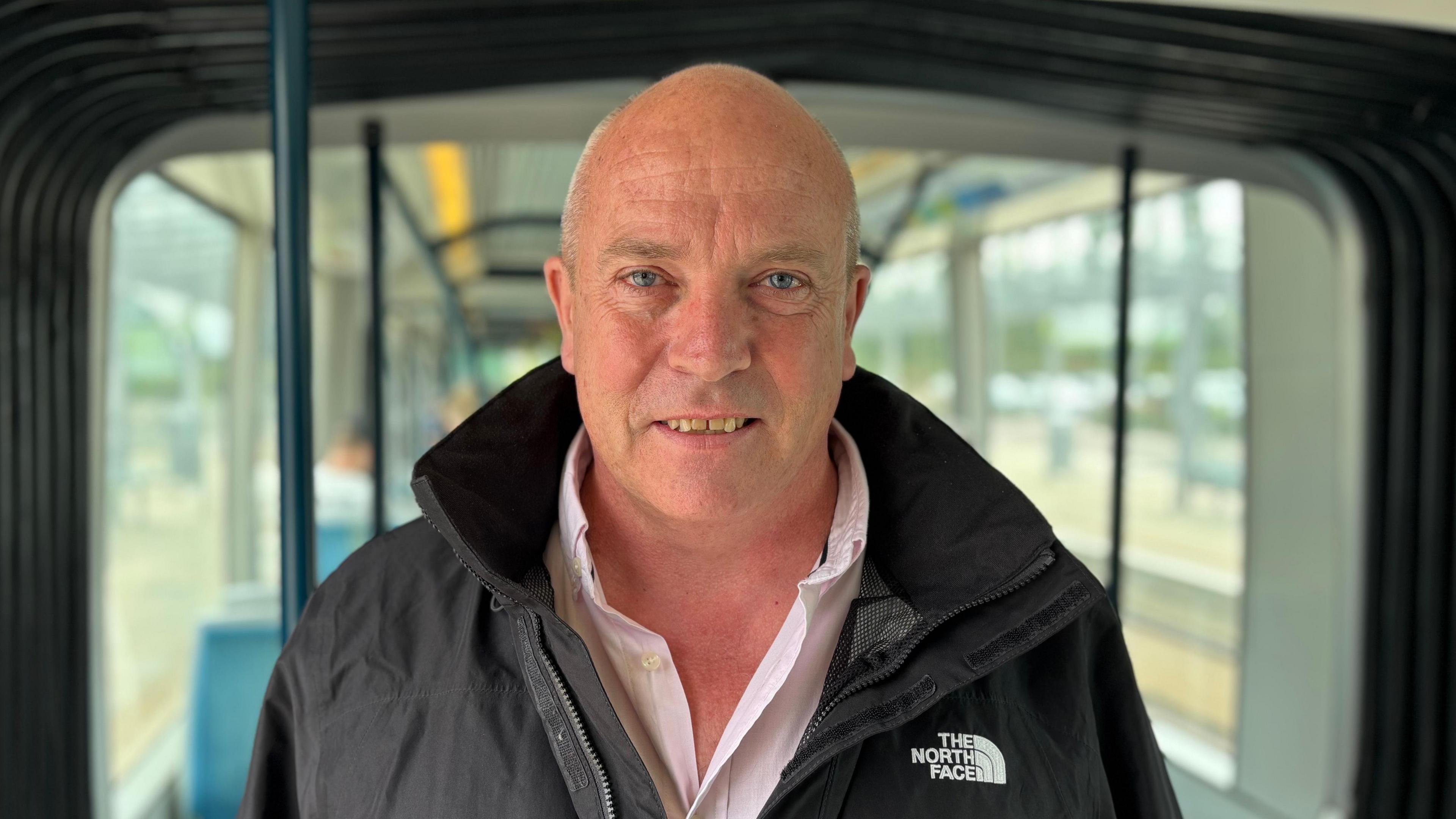
Tim Hesketh says the tram company's finances are "in very good shape"
NET's managing director Sarah Turner said the network had undergone a "huge recovery" since the Covid pandemic.
"In the last year we've seen passenger numbers increase by over a million," she said.
"We're seeing more and more people use it as the city changes and evolves. We're seeing a lot of students as the student population is growing and we're servicing the Queen's Medical Centre."
She acknowledged the current tram fleet was ageing but said NET had a "strong regime of maintenance."
She added she would "love to see" further tram extensions.
It's an aspiration shared by Nottingham City Council's executive member for transport Linda Woodings who said there was "massive demand" for expansion.
"We get people from all the different conurbations outside of Nottingham saying 'why can't we have a tram?', and no wonder," she said.
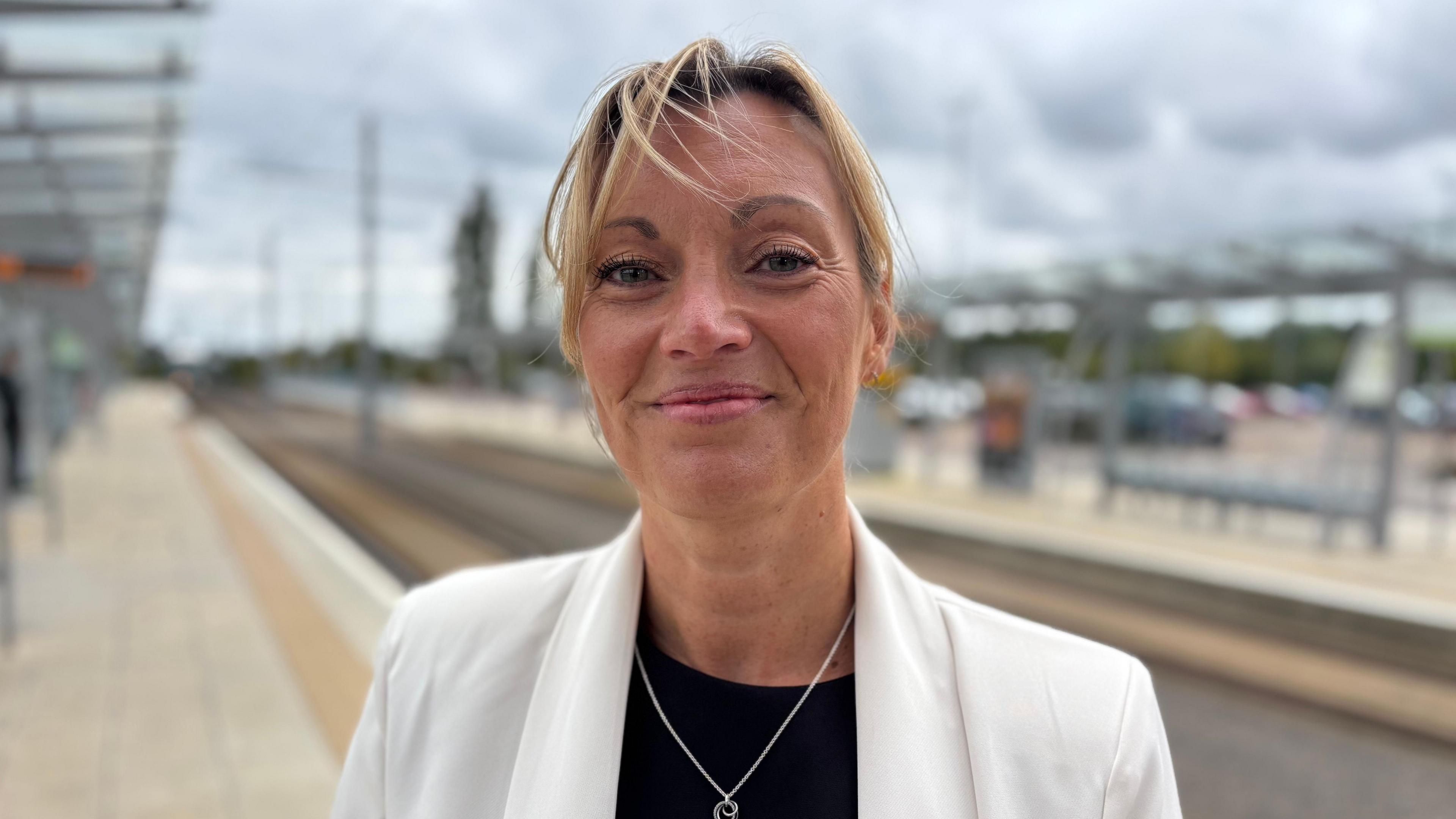
Sarah Turner would "love to see" the network expanded further
Calling for an expansion and being able to pay for an expansion are two very different things, but earlier this year the East Midlands Combined County Authority (EMCCA) approved £300,000 to fund a feasibility study into potential extensions.
Gedling has been touted as a possible destination, along with a major housing development at Fairham Pastures near Clifton and the site of Chetwynd Barracks in Chilwell.
Woodings acknowledged, however, that it could be another decade before any proposals become a reality.
"Even if we started tomorrow, it would be 10 years before you could get another tram line in, but I think you have to be bold and you have to be ambitious."
Get in touch
Tell us which stories we should cover in Nottingham
Follow BBC Nottingham on Facebook, external, on X, external, or on Instagram, external. Send your story ideas to eastmidsnews@bbc.co.uk, external or via WhatsApp, external on 0808 100 2210.
Related topics
- Published18 August
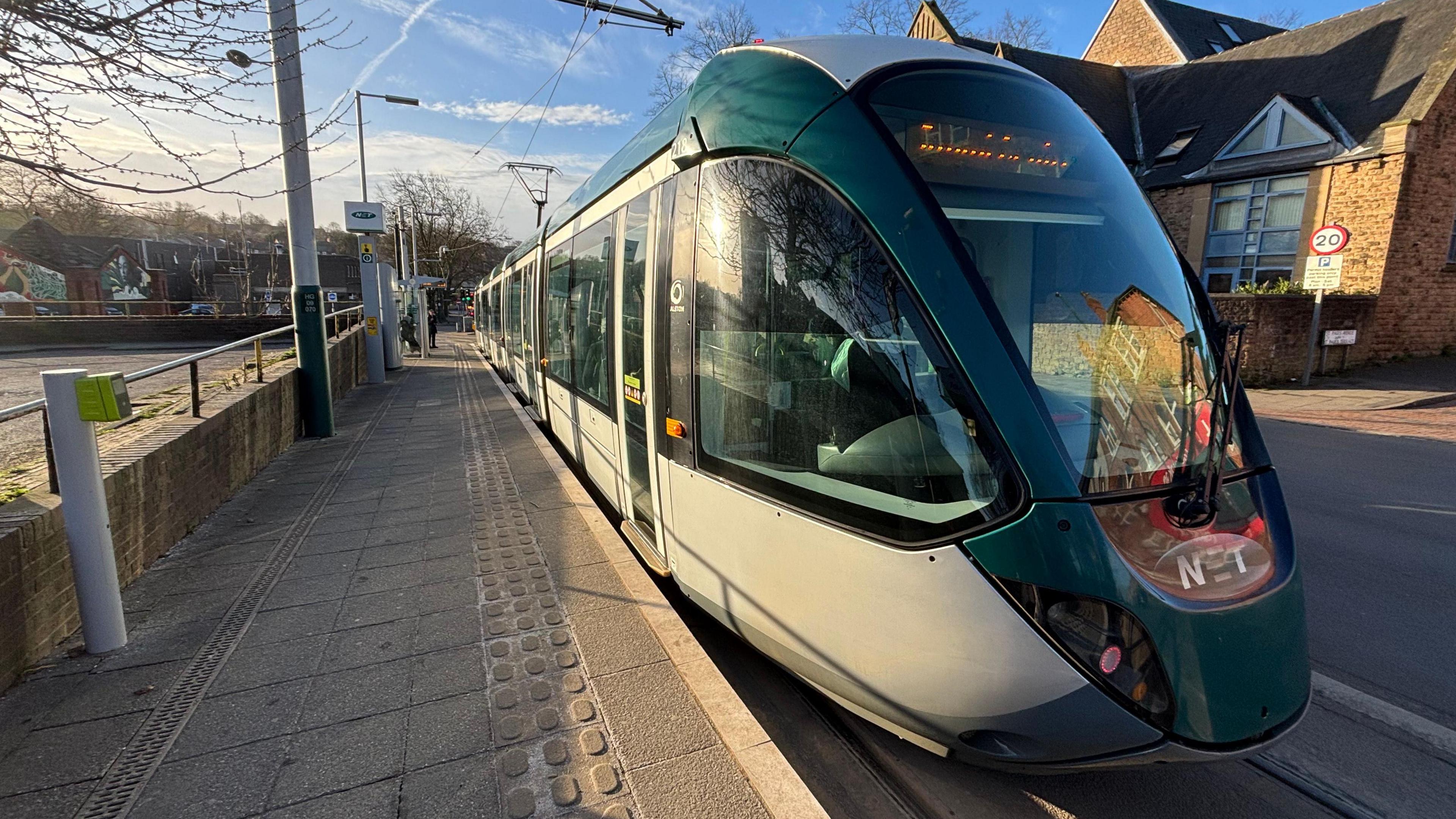
- Published12 March
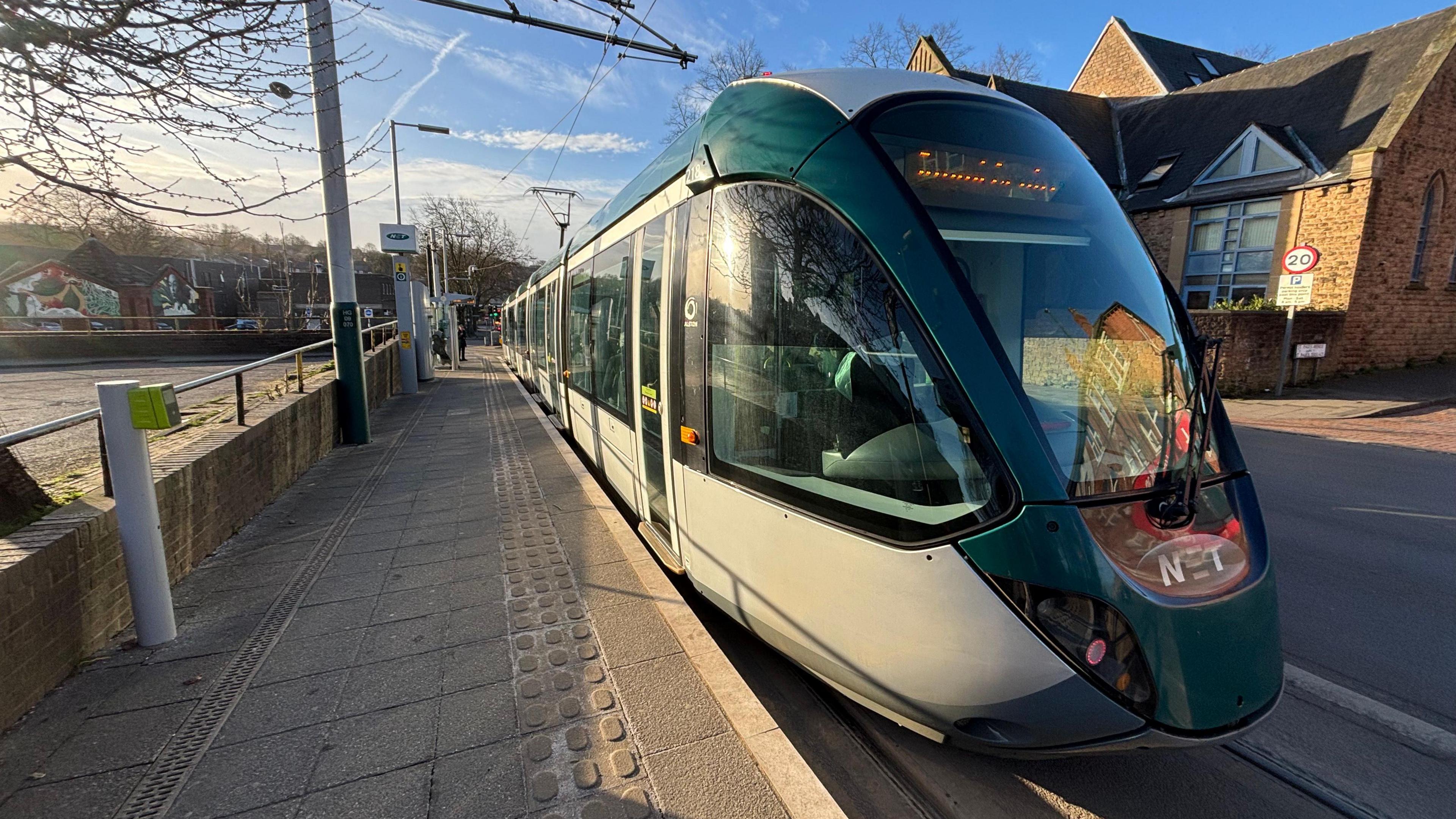
- Published10 August 2015
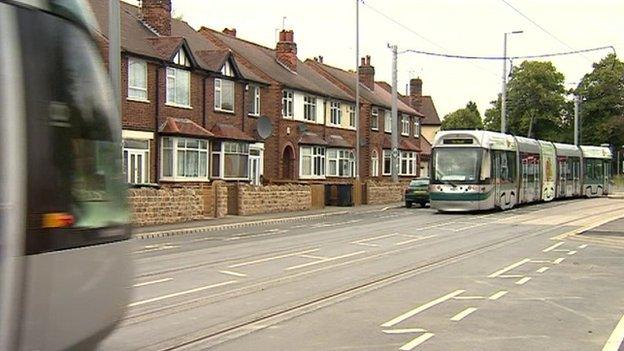
- Published27 July 2015
